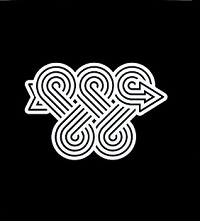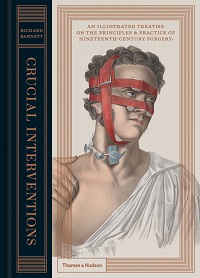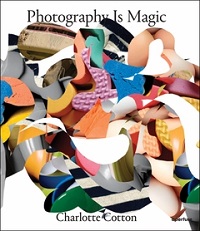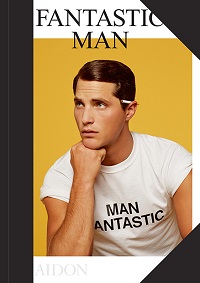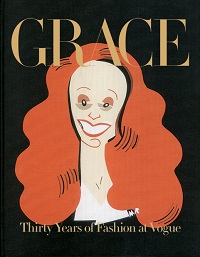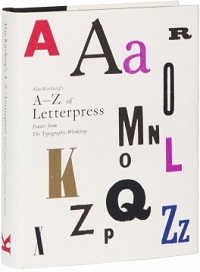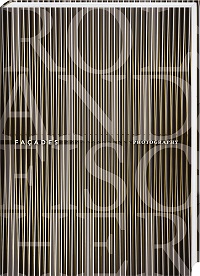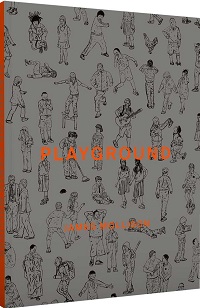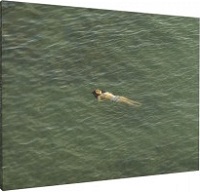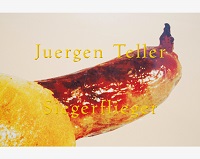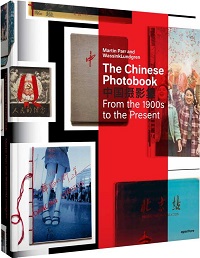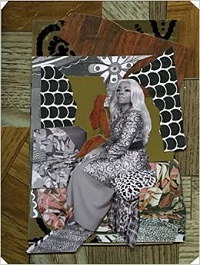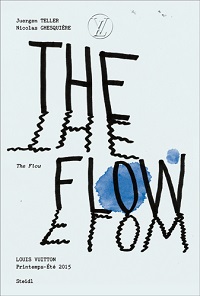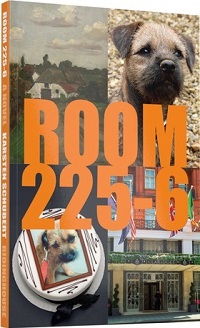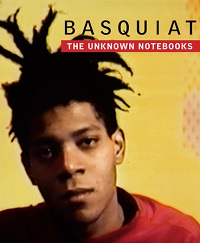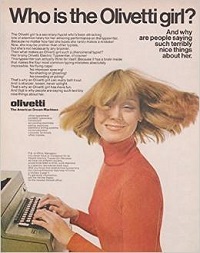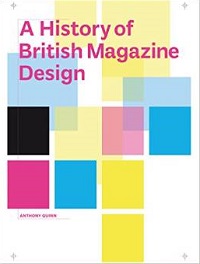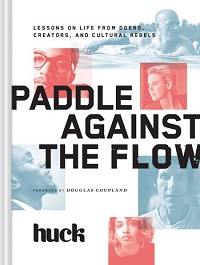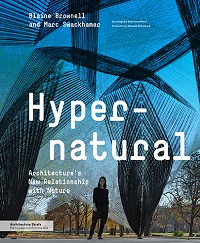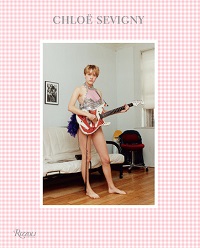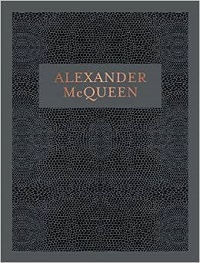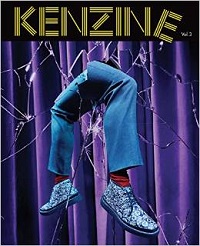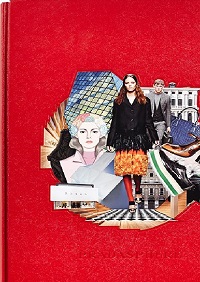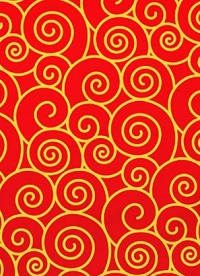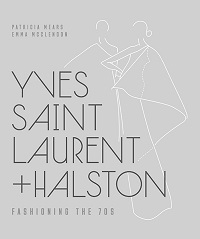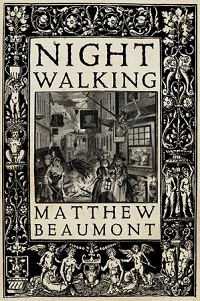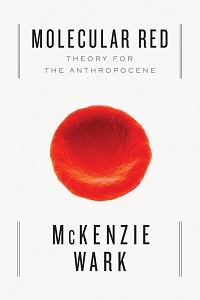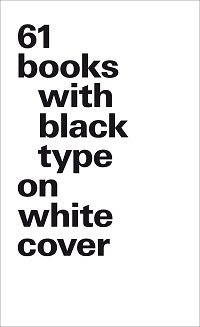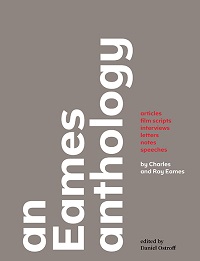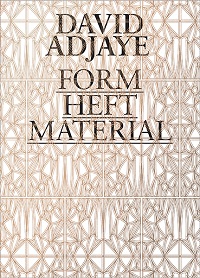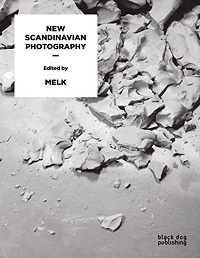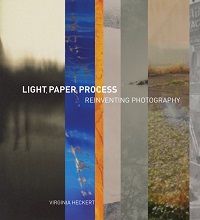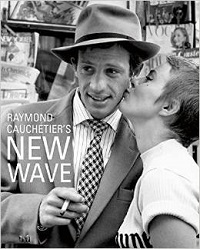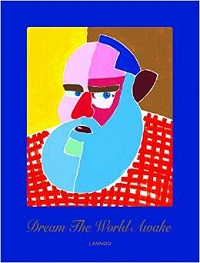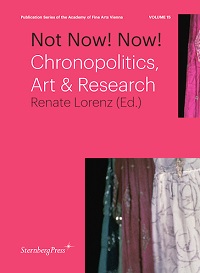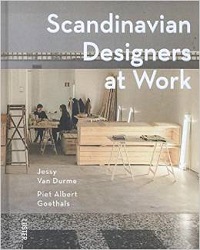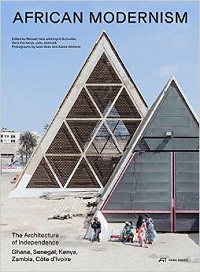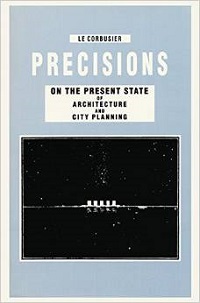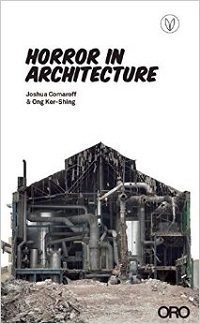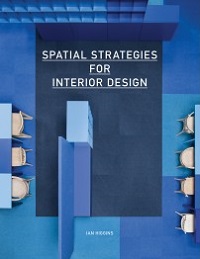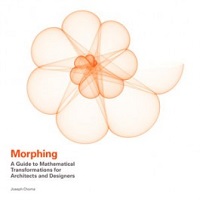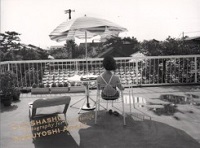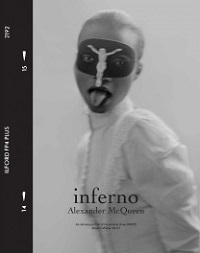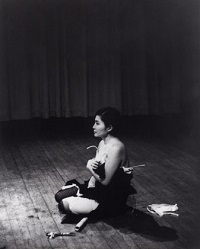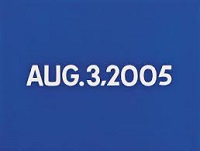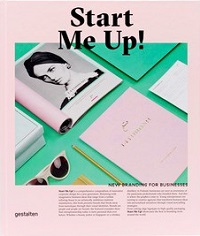Click on the image for more information, and to purchase
16 outstanding Design books to refresh your thinking.
We hope it's a collection of books that will get your inventive wit circulating – all have proved very popular with our customers in the last two months
A Dictionary of Color Combinations
The Politics of Design
Good Services
Pitching Ideas
Creative Confidence
Secret of the Highly Creative Thinker
Under the Radar: Underground Zines and Self Publications 1965-1975
The Language of Cities
Creative Superpowers
100 Chairs in 100 Days and its 100 ways
How to do Great Work Without Being an Asshole
Le Corbusier 5 x Unite d’Habitation
Radical Matter
Desgn For the Real World
Print Punch
FREE LOCAL DELIVERY!
We are making free weekly (Monday, Wednesday & Friday) deliveries in the following postal areas EC1, EC2, EC3, EC4, E1, E2, E3, E8, E9, E10, N1, N5 & N16. If your postal address is in one of these postcodes, type in the code 'FreeDel' when processing your online order and the cost of £6.00 p&p will be deducted from the total. There is no maximum to the number of times this code can be used - however it will only deduct £6.00 per order.



Thank you to all of you placing orders on our website, we’ve been very touched by your response – very much appreciated, every order helps to ensure our future – Thank You!
We’ve expanded our FREE DELIVERY SERVICE: we’re now running it three days a week - Monday, Wednesday & Friday, and we’ve expanded the free delivery area to include the following postal areas EC1, EC2, EC3, EC4, E1, E2, E3, E8, E9, E10, N1, N5 & N16. If your postal address is in one of these postcodes, type in the code 'FreeDel' when processing your online order and the cost of £6.00 p&p will be deducted from the total. There is no maximum to the number of times this code can be used – however, it will only deduct £6.00 per order – so, if you want to order more than one item, either make multiple orders, or if not let us know and we’ll refund any delivery costs that may have charged.
To the left, some of the new magazine issues due in next week…
Graphic Design
“Graphic design is all about telling stories, but visual stories.” Lance Wyman. This monograph is the first major publication devoted to Lance Wyman’s entire output. It showcases the achievements of a long and productive career, from his early work for General Motors, through his iconic designs for the Mexico 68 Olympics, to the Minnesota Zoo and his more recent projects. Lance Wyman will go down in history for his Mexico 68 designs, but he has also completed commissions for a huge variety of other projects. Many of these have been designed for the general public, and exist in the lived environments of cities and institutions. Wyman says, “I like the contextual part of working in an environment, whether it be urban or institutional or transportation. I think that’s where my best work is.
The nineteenth century saw a complete transformation of the practice and reputation of surgery. Crucial Interventions follows its increasingly optimistic evolution, drawing from the very best examples of rare surgical textbooks with a focus on the extraordinary visual materials of the mid-nineteenth century. Unnerving and graphic, yet beautifully rendered, these fascinating illustrations include step-by-step surgical techniques paired with medical instruments and painted depictions of operations in progress. Arranged for the layman from head to toe, and accompanied by an authoritative, eloquent and inspiring narrative from medical historian Richard Barnett, author of 2014 bestseller The Sick Rose, Crucial Interventions is a unique and captivating book on one of the world's most mysterious and macabre professions, and promises to be another success.
Architecture
Frenetic. Pulsating. Disorienting. Japan’s contemporary culture is constantly in flux, with a host of new architectural practices ushering in an era of continuous experimentation. Featuring more than 400 houses - one per page, one image per house - Jutaku: Japanese Houses is a fast-paced, shock to the system that shines a Harajuku–bright neon light on the sheer volume, variety and novelty of contemporary Japanese residential architecture. Featuring the work of many of Japan’s most famous architects including Shigeru Ban, Sou Fujimoto, Toyo Ito, Kengo Kuma, Jun Igarishi, Shuhei Endo and dozens of up and coming or as yet unknown young architects, Jutaku is organized geographically, speeding readers on a bullet train journey across Japan’s architectural landscape.
Photography
Photography Is Magic is a critical publication that surveys the practices of over eighty artists, all of whom are engaged with experimental approaches to photographic ideas, set within the contemporary image environment, framed by Web 2.0. The book contains a substantial essay by Charlotte Cotton and statements from all the contributing artists. The over three hundred image sequence represents the scope of photographic possibilities at play within contemporary creative practices. From Michele Abeles and Walead Beshty to Daniel Gordon and Matt Lipps, Cotton has selected artists who are consciously reframing photographic practices in the post-Internet age. Photography Is Magic provides an engaging physical experience - designed by Harsh Patel - for younger photo aficionados, students, and anyone interested in gaining a deeper understanding of contemporary photography.
Fashion
Charismatic, compelling and trendsetting, 69 of the world’s most influential and creative men presented by cult style-bible Fantastic Man. Gert Jonkers & Jop van Bennekom are the creators and editors of men's menswear and lifestyle magazine Fantastic Man. Jonkers and Van Bennekom met each other in 1997 working on Blvd, a sophisticated Dutch cultural and lifestyle magazine. The pair collaborated on a gay culture magazine, Butt, in 2001, which had immediate impact. The two then turned to Fantastic Man and continued their success with The Gentlewoman and a magazine for the fashion brand COS.
A celebration of the work of legendary fashion stylist Grace Coddington during her first 30 years at Vogue UK and US. First published in 2002, the reissue of this 408-page monograph of work by the legendary fashion stylist Grace Coddington is also a showcase for some of the greatest photographs ever published in British and American Vogue. It includes forewords by American Vogue Editor-in-Chief Anna Wintour and designer Karl Lagerfeld as well as personal anecdotes and insider stories of working with photographers Cecil Beaton, Irving Penn, Bruce Weber, Steven Meisel and Mario Testino and fashion-world personalities such as Naomi Campbell, Jerry Hall, Linda Evangelista and Manolo Blahnik.
_______________
Graphic Design
A must for letterpress enthusiasts and graphic designers, this is a covetable showcase of Alan Kitching’s fount collection. Each page has been carefully created by Alan Kitching in collaboration with Angus Hyland, making this book a work of typographic art in its own right. Presented as an A to Z, the individual letters are divided by full alphabets, giving the reader access to a large range of founts to reference in their own work.
Photography
Roland Fischer’s Façades are spectacular photographic pictures: a visual grammar of architectural structures, an alphabet of abstract forms full of art-historical references. Roland Fischer (b. 1958), whose work is exhibited worldwide in important museums, lives and works in Munich and Beijing. Since the 1990s the artist has been photographing the exteriors of buildings, of banks, corporate headquarters and museums in the metropolises of the world, including Beijing, Tokyo, Shanghai, New York, Hong Kong, Melbourne, Osaka, Boston, Brasilia, Los Angeles, Paris, São Paulo, Singapore, Dallas, Madrid, Washington, Mexico City, Chicago, Toronto, Chongqing and Montreal. The results of this breathtaking project form an unusual series of some 100 façades: a vocabulary of global architecture, an inventory of city landmarks. The structures and colours of the contemporary metropolitan universe are transformed into pictures that resemble abstract paintings.
James Mollison’s photo projects are defined by smart, original concepts applied to serious social and environmental themes. For his latest book, Playground, Mollison photographs children at play in their school playgrounds, inspired by memories of his own childhood and interested in how we all learn to negotiate relationships and our place in the world through play. For each picture, Mollison sets up his camera during school break time, making multiple frames and then composing each final photograph from several scenes, in which he finds revealing “play” narratives. With photographs from rich and poor schools, in countries including Argentina, Bhutan, Bolivia, India, Israel, Italy, Japan, Kenya, Nepal, Norway, Sierra Leone, the United Kingdom, and the U.S., Mollison also provides access for readers of all ages to issues of global diversity and inequality.
Since the publication of Richard Misrach’s best-selling and critically acclaimed publication On the Beach, he has continued to photograph at the same location, building a body of work that has been exhibited as On the Beach 2.0—a reference to the technological and optical developments that have made the intensely detailed, exquisitely rendered depictions possible. The Mysterious Opacity of Other Beings focuses less on the abstraction of water, sand, and mote-sized figures, instead honing in on the gestures and expressions of bathers adrift in the ocean, at play or in poses ranging from relaxation to transcendence.
For a German football enthusiast like Juergen Teller, summer 2014 couldn’t have been any better. The German national team—not guest of honor in Teller’s work since Nackig auf dem Fussballplatz (Steidl, 2004)—won the World Cup in Brazil, and Teller was there every step of the way. Siegerflieger (literally “the victors’ plane,” the affectionate name given to the German team’s customized jumbo) unfolds in typical diary-like Teller fashion: we see him enjoying a bratwurst or two, a casual round of chess with the family in his hometown of Bubenreuth, and perhaps one drink too many with his students from the Academy of Fine Arts in Nuremberg. Yet Teller’s obsession for football (also shared by his son Ed, the covert star of this book) remains center stage, be he watching the final live on TV or welcoming home the triumphant team at the Brandenburg Gate. Teller even went so far as to immortalize the German victory in his very first tattoo, a natural step for football fanatics. For the rest of us, we have the exuberant, testosterone-charged Siegerflieger to enjoy.
In the last decade there has been a major reappraisal of the role and status of the photobook within the history of photography. Newly revised histories of photography as recorded via the photo- book have added enormously to our understanding of the medium’s culture, particularly in places that are often marginalized, such as Latin America and Africa. However, until now, only a handful of Chinese books have made it onto historians’ short lists. Yet China has a fascinating history of photobook publishing, and The Chinese Photobook will reveal for the first time the richness and diversity of this heritage. This deluxe, lavishly produced volume is based on a col- lection compiled by Martin Parr and Beijing- and London-based Dutch photographer team WassinkLundgren. And while the collection was inspired initially by Parr’s interest in pro- paganda books and in finding key works of socialist realist photography from the early days of the Communist Party and the Cultural Revolution era, the selection of books includes key volumes published as early as 1900, as well as contemporary volumes by emerging Chinese photographers.
Mickalene Thomas is best known for her large-scale, multi-textured and rhinestone-bedecked paintings of domestic interiors and portraits. However, the Brooklyn-based artist has also identified the photographic image as an important touchstone for her work, both as source material and as a medium for creating work. In an interview in the catalog for her solo show at the Brooklyn Museum last year, Thomas described photography as something that “defines [her] practice. It provides a connection between all the works.” As a student at Yale, she took classes with photographer David Hilliard, who encouraged her to photograph herself and her mother—an experience that Thomas sees as an important pivot point for her as an artist.
Fashion
Following the success of I Just Arrived in Paris THE FLOW is the second book in the continuing collaboration between Juergen Teller and Nicolas Ghesquière, artistic director of Louis Vuitton. On 1 October 2014 Teller photographed Ghesquière’s Spring-Summer 2015 collection for the house, and the resulting book is a fluid mix of fashion photos in Teller’s inimitable guileless style and images of Paris shot while boating down the Seine. This combination of portraiture, still-life and landscape photography mirrors the eclectic influences and materials which Ghesquière synthesizes in his collections—a bold, unconventional flow whereby innovation unceasingly rejuvenates tradition.
_______________
Theory
Recounting art dealer Karsten Schubert’s recuperation from major surgery in the famous Claridge’s Hotel in London, this idiosyncratic novel interweaves reality with fantasy. Room 225–6 follows the author-character ‘The Protagonist’ around London’s Mayfair as he hosts endless art world gatherings, tea parties for twenty and visits a multitude of local galleries and stores. Incorporating multi-layered voices and devices, the distinctive narrative introduces the reader to a memorable host of characters – from the ‘The Political Prisoner’ to ‘The Little Mondrian’ – in a tale filled with humour of observation and incident. Bringing to life this frightening yet extraordinary period in one man’s life, it is at once honest, satirical, idiotic and bold.
Art
Accompanying a major traveling exhibition, this first-ever survey of the rarely seen notebooks of Basquiat features the artist’s handwritten notes, poems, and drawings, along with related works on paper and large-scale paintings. With no formal training, Jean-Michel Basquiat (1960–1988) succeeded in developing a new and expressive style to become one of the most influential artists in the postmodern revival of figurative during the 1980s. In a series of notebooks from the early to mid-1980s, never before exhibited, Basquiat combined text and images reflecting his engagement with the countercultures of graffiti and hip-hop in New York City, as well as pop culture and world events. Filled with handwritten texts, poems, pictograms, and drawings, many of them iconic images that recur throughout his artwork—teepees, crowns, skeleton-like silhouettes, and grimacing masks—and these notebooks reveal much about the artist’s creative process and the importance of the written word in his aesthetic. With over 150 notebook pages and numerous drawings and paintings, this important book sheds new light on Basquiat’s career and his critical place in contemporary art history.
Shit and Die is an editorial project by Maurizio Cattelan, Myriam Ben Salah and Marta Papini, published as part of the homonymous exhibition in Torino (November 6th 2014 - January 11th 2015). The publication is not a mere comment on the exhibition; it could be seen as an extension of it, a missing room. As the show, it is conceived as the most subjective, obsessive and irrationally non exhaustive composition. Several local stories, unpublished archival material, exclusive contributions by artists and theorists incorporate into a consistent and unique narration through seven deadly chapters that readers can comprehend as a whole tale. The list of artists on show is composed of established names from the international art scene as well as emerging artists, including among others: Davide Balula, Guy Ben Ner, George Condo, Martin Creed, Stelios Faitakis, Rokni and Ramin Haerizadeh, Petrit Halilaj, Dorothy Iannone, Yan Pei Ming, Aldo Mondino, Carol Rama, Roman Signer, Alexandre Singh, Jim Shaw, Andra Ursuta, Francesco Vezzoli, Jakub Julian Ziolkowski, Carlo Mollino. The list of contributors to the publication comprehends the artists included in the show and artists and theorists specifically invited for the publication.
Graphic Design
This book is an investigation into the design and history of British magazines over the past 170 years. It identifies turning points and new directions in one of the most sensitive barometers of mass-market design taste, from the advent of two periodicals - Punch and the Illustrated London News - that changed publishing fundamentally, through to the beginnings of digital distribution. A magazine flourishes or folds according to its audience's response to its look and feel - sometimes more so than its written content - and this study of a developing history encompasses discussion of graphic design, typography, photography and innovative print technology. It explores why magazines have looked how they do. Published with full access to the National Art Library's unparalleled archive of periodicals, British Magazine Design is a definitive history.
Design
Nas on language, Cat Power on looking inward, Spike Jonze on loving what you do, and Kim Gordon on feeling the flow. These are just a few of the indie stars and surprising insights collected in this gorgeous book by Huck magazine. Since launching in 2006, Huck has been at the vanguard of London's thriving independent publishing scene and has grown into an internationally distributed bi-monthly, with editions available on newsstands in 20 countries worldwide. Bringing together the best insights from over 60 of the most inspiring people Huck has spoken to over the years—along with exclusive photography and art that has come to embody Huck's distinct aesthetic—this book presents a diverse range of truths, creative wisdom, and life lessons from those who paddle against the flow.
Architecture
Despite the ever-growing sophistication of synthetic and digital tools, it's the natural world that captures the imaginations of today's vanguard designers. By looking to nature as a teacher rather than simply as a source for raw materials, pioneers in the emerging biomimicry movement are developing design methods and materials to create intelligent buildings that emulate life itself. In Hypernatural architecture and material experts Blaine Brownell and Marc Swackhamer present an international collection of forty-two case studies that illustrate astonishing new applications possible in this rapidly growing field, from Echoviren, a botanical pavilion that was designed to wilt into its surrounding redwood forest in Northern California, to the MIT Media Lab's Silk Pavilion, constructed by the threads of silkworms as they passed over scaffolding. Together, these projects show that by looking to nature, design can be a tool that makes our built environment more efficient, sustainable, and, most of all, livable.
Photography
A celebration of the eclectic and daring personal style of the actress and contemporary fashion icon Chloë Sevigny—famous for looking cool without looking like she’s trying. Chloë Sevigny has been a muse in the downtown creative scene for over three decades, beginning in the early ’90s when she modeled for Sassy, appeared in a Sonic Youth music video, and then starred in the controversial independent movie Kids (1995). Her quirky and avant-garde fashion sense was quickly noticed by indie magazines and the world’s top photographers. Since then, she has starred in dozens of films and television series, in addition to starting a fashion label with the trendy global boutique Opening Ceremony. This volume is a deeply personal illustrated chronicle of the evolution of Sevigny’s unique style throughout her career: from a teenage skater girl to award-winning film actress and fashion designer. The book includes early personal photos of Chloë taken by her high school friends; film stills; modeling appearances for brands such as Miu Miu and Chloé; magazine editorials for Purple, i-D, and The Face by top photographers such as Mark Borthwick, Terry Richardson, and Juergen Teller; and homages by artists such as Elizabeth Peyton and Karen Kilimnik. Additionally, Sevigny shares some of her treasured personal memorabilia, such as casting fliers, Polaroids, zines, and pages from her day planners. This volume will appeal to the legions of global Chloë fans and fashion industry followers, as well as a mainstream audience who will find this book an inspirational style bible.
Fashion
'Fashion is a big bubble, and sometimes I feel like popping it. 'Alexander McQueen, 2009. This definitive publication on Alexander McQueen (1969 - 2010) invites you into the creative mind of one of Britain's most brilliant, daring and provocative designers. Accompanying the V&A's landmark exhibition Alexander McQueen: Savage Beauty, this comprehensive catalogue features 28 ground-breaking essays from expert fashion commentators and cultural scholars which examine the richness and complexity of McQueen s visionary fashion. The publication includes over 440 striking images, from intimate backstage portraits and editorials by leading fashion photographers to previously unpublished sketches and research boards from the McQueen archive. At the centre of the book is a Cabinet of Curiosities gatefold with a specially commissioned photo shoot that showcases McQueen s breath-taking attention to detail. The book closes with an encyclopaedic survey of all of McQueen's London collections, from his 1992 MA graduate collection to his final collection, posthumously presented in March 2010.
“For the third instalment in our collaboration with TOILETPAPER for our advertising campaigns, we worked with Maurizio, Micol and Pierpaolo to take people on a mysterious journey to an unfamiliar world. A place where the ordinary is slightly distorted, mirrors lead to other dimensions and the strange and beautiful coexist in singular harmony. We love that David Lynch’s (the inspiration for our collections) skewed and somewhat disruptive sense of storytelling seamlessly fits with how the TOILETPAPER approach image making and the final results speak for themselves. Needless to say we’re delighted with the outcome and hope everyone else enjoys the images as much as we do.” Carol Lim & Humberto Leon.
Pradasphere is not about the past; it is a snapshot of a single moment: now. In this comprehensive collection of Prada's work, Pradasphere llustrates the house's unique place in contemporary culture and explores the outside forces that shape its vision. From Prada's origins and the clothing, accessories and films made to the creative input of collaborators and the insights drawn from disciplines such as art, film and architecture, this book shows Prada's unique vision and wide influence. Pradasphere is more than a collection of Prada ephemera; it's an exploration of the way Prada uses design to explore ideas about the world. Through clothing, film, architecture, and more, Prada shows that design is about the joy of working and creative exploration and how that spirit finds its way into all that is made.
_______________
Fashion
For centuries, China’s export arts—jade, silks, porcelains, and, more recently, cinema—have fuelled Western fantasies of an exotic East and served as enduring sources of inspiration for fashion. This stunning publication explores the influence of Chinese aesthetics on designers, including Giorgio Armani, Christian Dior, Jean Paul Gaultier, Karl Lagerfeld, Ralph Lauren, Alexander McQueen, and Yves Saint Laurent. Drawing upon Chinese decorative arts, cinema, and costume—notably imperial court robes, the close-fitting cheongsam, and the unisex Mao suit—their designs are fantastical pastiches of anachronistic motifs. As in the game of “telephone,” the process of cultural translation transforms the source material into ingeniously original fashions that are products solely of the designers’ imaginations. In a similar way, contemporary Chinese film directors render fanciful, highly stylized evocations of various epochs in China’s history—demonstrating that China’s imagery is equally seductive to artists in the East and further inspiring today’s designers. Juxtaposing modern fashions and film stills with their forebears in fine and decorative arts and historical dress, this book reveals the rich and ongoing creative dialogue between East and West, past and present.
This fascinating publication is the first to examine side by side the careers and work of two of the biggest names in 20th-century fashion, Yves Saint Laurent (1936–2008) and Halston (1932–1990). Their designs—chic, sexy, and glamorous—came to exemplify the 1970s, a singular and dynamic era in fashion history. Inspired by menswear, foreign cultures, and wide-ranging historical periods, and employing new fabrics, YSL and Halston together crafted a new and distinctly modern way of dressing. Moreover, although their output differed and they were based on different continents, the two designers shared many career parallels. A visual timeline of the designers’ lives illustrates how their rises and falls, from the 1950s to their respective struggles in the 1980s, were surprisingly in sync. Engaging passages by Patricia Mears and Emma McClendon discuss the social, cultural, and economic factors that influenced both designers, and their subsequent impact on fashion—including the rise of the star designer as personality, the cult of celebrity, and the creation of the fashion conglomerate. The authors also address the importance of colour, cutting-edge materials, innovative construction techniques, accessories, and perfume to both designers’ aesthetics. Remarkable photographs of the designers and their garments round out this essential volume on two figures who made an indelible mark on fashion history.
Theory
“Cities, like cats, will reveal themselves at night,” wrote the poet Rupert Brooke. Before the age of electricity, the nighttime city was a very different place to the one we know today – home to the lost, the vagrant and the noctambulant. Matthew Beaumont recounts an alternative history of London by focusing on those of its denizens who surface on the streets when the sun’s down. If nightwalking is a matter of “going astray” in the streets of the metropolis after dark, then nightwalkers represent some of the most suggestive and revealing guides to the neglected and forgotten aspects of the city." In this brilliant work of literary investigation, Beaumont shines a light on the shadowy perambulations of poets, novelists and thinkers: Chaucer and Shakespeare; William Blake and his ecstatic peregrinations and the feverish ramblings of opium addict Thomas De Quincey; and, among the lamp-lit literary throng, the supreme nightwalker Charles Dickens. We discover how the nocturnal city has inspired some and served as a balm or narcotic to others. In each case, the city is revealed as a place divided between work and pleasure, the affluent and the indigent, where the entitled and the desperate jostle in the streets.
In Molecular Red, McKenzie Wark looks for ways to think, and perhaps even combat, the philosophical foundations of the Anthropocene. Throughout the great upheavals of the past 300 years, the carbon economy has been predominant. It was at the centre of both the Soviet and the American empires and, as a result, both are doomed to fail. "Out of the ruins of this devastated, desert landscape, we must salvage what might help us understand the future. Thus Wark revisits the work of Alexander Bogdanov – Lenin’s rival – and the great Proletkult writer and engineer Andrey Platonov. In this reading, the Soviet experiment emerges from the past as an allegory for our time."Moving toward the present, in the midst of Empire’s fall, Wark reads Donna Haraway’s cyborg critique and science fiction writer Kim Stanley Robinson’s Martian utopia as powerful resources for grasping the world that the climate change has wrought. Wark proposes an alternative realism, where hope can be found amongst what remains and endures.
Graphic Design
The designer Bernd Kuchenbeiser loves books – some because of their content, some because of their appearance. His library expands constantly and not only for professional reasons; there are plenty of volumes he loves to have on his shelves simply because he finds them such beautifully designed objects. A "good book" and whatever it is that makes a book beautiful are not easy to define – the details of a design may well suit one book to perfection, but be very much out of place with another publication. A good book never wants to be left on the shelf – it needs to be read, examined, discussed, and it was with all of this in mind that the author launched his Website "A Good Book", where publications of many different genres are presented as if in an intimate diary, and discussed not only in terms of their content, but also in the context of their creative design, or the pleasures to be had from holding and examining them. He was quick to notice how many of these fine books had a simple design combination of black text on a white background. This observation is why 61 books with black type on white cover came into being as an "analogue" selection from the website: each book here is presented with the cover, a bibliography and a short text, anecdote, or even a quotation to initiate discussion. Much care, effort and affection was lavished on compiling and designing a reader – this is an anthology which of course also references the black and white thematic focus. 61 books with black type on white cover is available in two sizes: a small reader in paperback format or as a large display volume with the covers in the original dimensions.
Design
An Eames Anthology collects for the first time the writings of the esteemed American architects and designers Charles and Ray Eames, illuminating their marriage and professional partnership of fifty years. More than 120 primary-source documents and 200 illustrations highlight iconic projects such as the Case Study Houses and the molded plywood chair, as well as their work for major corporations as both designers (Herman Miller, Vitra) and consultants (IBM, Polaroid). Previously unpublished materials appear alongside published writings by and about the Eameses and their work, lending new insight into their creative process. Correspondence with such luminaries as Richard Neutra and Eero Saarinen provides a personal glimpse into the advance of modernity in mid-century America.
Architecture
Born in Tanzania, David Adjaye is rapidly emerging as a major international figure in architecture and design—and this stunning catalogue serves only to cement his role as one of the most important architects of our time. His expanding portfolio of important civic architecture, public buildings, and urban planning commissions spans Europe, the United States, Africa, Asia, and the Middle East. He transforms complex ideas and concepts into approachable and innovative structures that respond to the geographical, ecological, technological, engineering, economic, and cultural systems that shape the practice of global architecture. The publication of this compendium of work and essays coincides with the scheduled opening of Adjaye’s National Museum of African American History and Culture on the National Mall in Washington, D.C. Adjaye’s completed work in the United States includes the Museum of Contemporary Art in Denver, a pair of public libraries in D.C., and several private residences. He is also known for his collaborations with artists, most recently with the British painter Chris Ofili. Following an introduction by Zoë Ryan, Adjaye writes on his current and future work, with subsequent essays by an extraordinary cadre of architectural scholars on Adjaye’s master plans and urban planning, transnational architecture, monuments and memorials, and, finally, the forthcoming museum in D.C. Portfolios of Adjaye’s work thread throughout this comprehensive volume.
Photography
The first comprehensive study of the contemporary Scandinavian photography scene produced in collaboration with MELK, the book documents the shift in Scandinavian photography away from a documentary practice and towards a fine- art discourse. Since the late 1980s Scandinavian photography has evolved into an internationally recognised art scene, with the past two decades seeing a transition from traditional photo-journalistic practice towards a fine-art discourse. Focusing on the last ten years, New Scandinavian Photography highlights the work produced by a diverse range of artists who are exploring and manipulating the use of photography in their practices and explores photography as a medium through academic texts and interviews, addressing the technical and material properties of photography in the context of fine art and pan-media practice with a focus on the exhibition room as well as printed matter. Through critical examination and personal interviews, the book showcases established names in the photographic art scene such as Asger Carlsen and Emil Salto, along with emerging talents that include Marten Lange and Marthe Elise Stramund. A key focus is upon artist’s use of photography as a medium, along with their methods of presentation, from the white cube gallery space to intimate printed matter.
From its beginnings, photography has been shaped by the desire to understand and explore the essence of the medium. Light, Paper, Process features the work of seven artists—Alison Rossiter, Marco Breuer, James Welling, Lisa Oppenheim, Chris McCaw, John Chiara, and Matthew Brandt—who investigate the possibilities of analogue photography by finding innovative, surprising, and sometimes controversial ways to push light-sensitive photographic papers and chemical processing beyond their limits. A panoply of practices emerges in the work of these artists. Some customize cameras with special lenses or produce images on paper without a camera or film. Others load paper, rather than film, in the camera or create contact-printing with sources of light other than the enlarger, while still others use expired photographic papers and extraneous materials, such as dust and sweat, selected to match the particular subject of the photograph. All of the artists share a willingness to embrace accident and chance. Trial and error contribute to an understanding of the materials and their potential, as do the attitudes of underlying curiosity and inventive interrogation. The act of making each image is like a performance, with only the photographer present. The results are stunning.
_______________
Photography
In the late 1950s and early 1960s French New Wave cinema exploded onto international screens with films like Les quatre cents coups, A bout de souffle and Jules et Jim. They were radical, artistic, original and most importantly set up the director as a creative genius; at the forefront were Francois Truffaut and Jean-Luc Godard. Today these films are credited with changing cinema forever. For many film goers they command strong and passionate respect and became the foundations on which a lifetime of cinema-going is built. In the photographs of Raymond Cauchetier we bear witness to the great artistic genius that was central to the process of making these films. Cauchetier's photographs are a culturally important documentary of the director at work, his methods and processes. His photographs capture some of the most memorable moments in film; Jean-Paul Belmondo and Jean Seberg on the Champs Élysées in A bout de souffle, Jean Moreau in the race scene of Jules et Jim, Anna Karina in a Parisian Cafe in Une femme est une femme.
Fashion
Walter van Beirendonck has been at the forefront of fashion for more than thirty years. One of the 'Antwerp Six' and the director of fashion at the Royal Academy of Fine Arts, he is known for the uninhibited nature of his work and the wonderful daring that he shows as a designer. This is the third and final edition of Dream the World Awake by Walter Van Beirendonck; it is a numbered edition of 900 copies. It has a luxury finishing with an extra changeable golden foil cover by Dirk Van Saene, one of the famous Antwerp Six. The book gives exciting and captivating form to the complexity and multilayered quality of Van Beirendonck's work, and reveals his wide range of inspirations, which include technology, art, pop culture and ethnography.
Theory
Not Now! Now! engages with the politics of time in art: historical narratives and memory, the unforeseen rhythms of time, and the challenge of visualizing time. The book connects the postcolonial and queer debate around chronopolitics with artistic strategies that introduce breaks, stutter time, use citations and anachronisms, and introduce deferrals and collapses between time and meaning. They thus challenge orderly and rigid temporal concepts and their effects on bodies and the social. Contributions by art theorists, artists, and artistic researchers highlight how temporal norms organize our biographies and intimate relations, as well as the handling of capital or the continuation of colonial relations. The book instead suggests to focus on a particular non/moment in time: the not-now/now. It indicates a possible break in the temporal order, a meaningful gap between “not now!” and “now!” Or: the past and the future (“not now!”) uncannily but promisingly showing up “now!”
Design
The account of a unique journey through the fascinating North during in which Jessy Van Durme and Piet Goethals visited 18 contemporary designers (of furniture and everyday objects) who they selected based on the quality of their work and their vision - designers who deserve to step out of the shadows. Jessy and Piet visited workshops, houses and apartments and made personal portraits of the designers behind the product - their personalities, their sources of inspiration, their vision for design and heritage...Through illuminating photographs and enlightening text, Scandinavian Designers at Work perfectly captures the atmosphere of the interiors, products, people and landscapes.
Architecture
In the 1950s and 1960s, most African countries gained independence from their respective colonial power. Architecture became one of the principal means by which the newly formed countries expressed their national identity. Parliament buildings, central banks, stadiums, convention centres, universities and independence memorials were built, often to heroic and daring designs. At the same time, these buildings exemplify also the difficulties, contradictions and dilemmas these countries experienced in their nation-building process. African Modernism: The Architecture of Independence investigates for the first time the relationship between architecture and nation building in Ghana, Senegal, Kenya, Côte d'Ivoire, and Zambia. It features well over one hundred buildings with brief descriptive texts, images, site plans and selected floor plans and sections. The majority of images are contributed by celebrated Dutch architectural photographer Iwan Baan, documenting the buildings in their present state. Each country is portrayed in an introductory text and a timeline of historic events. Further essays on post-colonial Africa and specific aspects and topics, also illustrated with images and documents, expand on the themes of this outstanding book.
Coinciding with the 50th anniversary of his death (August 27, 2015), one of Le Corbusier's most significant books becomes available again in English. The 'Precisions', as the book is commonly known, emerged from a spontaneous and exuberant series of 10 lectures Le Corbusier gave in Buenos Aires in 1929, reflecting a new maturity in his thinking. They contain some of his most compelling aphorisms, covering technique as the basis of architecture, the human scale in design, furniture, the private house, apartments and office buildings, the city, the League of Nations competition, teaching architecture. As he spoke, Le Corbusier improvised colour drawings on large sheets of paper. The drawings and lectures are unique in their eloquent and concise summary of his philosophy of architecture and urban design, stating the principles that informed his work from the 1920s on. This new edition for the first time features all of Le Corbusier's drawings in colour. A new essay by British scholar Tim Benton, written for this new edition, contextualizes the 'Precisions' within Le Corbusier's oeuvre and comments on their lasting significance.
Horror in Architecture looks at the idea of horror and its analogues in architecture. In these, normal compositions become strange: extra limbs appear, holes open where they should not, individual objects are doubled or split or perversely occupied. Horrifying buildings re-imagine the possibilities of architectural language, shifting from "natural" norms to other, more rarified and exciting options. They define an expanded aesthetic field that marries the beautiful to the distorted, the awkward, the manifold, and the indeterminate. Through an investigation that spans architecture, art, and literature, this study attempts to limn horror through its shifting forms and meanings - and to identify a creeping unease that lingers at the very centre of the modern project. Horror in Architecture may be read as a history, as an alternative to the classic canon of good and proper architectures, or as a sly manifesto for a new approach to the design of the built environment - one that encourages a playful subversion of conventions. To capture horror in its many guises, this study is presented in a unique manner. An introductory essay describes the historical fortunes of horror as an aesthetic idea, from Roman antiquity to the pulp films and novels of the present day. Here, the authors put forward a new theory of the sources and effects of horror in modernity and in modern architecture. This is followed by case studies of types, linking classic tropes (clones, doubles, hybrids, psychotics and the undead) to specific buildings and architectural theories. As a result, this study may be read in a number of different ways. It may be consumed as a total theoretical piece, from start to finish. Or it may provide a series of more casual readings, in the various chapters and brief presentations of the works of individual architects or buildings.
_______________
Design
Spatial Strategies for Interior Design: This inspirational and practical guide to organizing and planning interior spaces is packed with photographs, diagrams, models, case studies and step-by-step instructions. It provides useful information on finding ways to start the design process, analyzing existing buildings, using planning diagrams, developing three-dimensional spatial compositions, designing in section, how to communicate your design ideas and much more.
What was once considered incomplete and in need of repair, is chic and hip today: in new office buildings copper pipes are no longer hidden, but are exposed and artfully displayed against the raw formwork pattern of a concrete wall with ingenious lighting. Likewise, the unplastered, cracked walls of a restaurant in a former factory building are creatively altered with translucent modern textile materials. Rough Style presents buildings and spaces by architects and interior designers who work out expressive and most rigorous design concepts. Refraining from the accustomed ideals of beauty and perfection is the new approach. The uncompromising and exciting relationship in the encounter of innovative design schemes and raw unfinished states or traces of the past opens up new aesthetic horizons, creating new standards of value.
Architecture
Cylinders, spheres and cubes are a small handful of shapes that can be defined by a single word. However, most shapes cannot be found in a dictionary. They belong to an alternative plastic world defined by trigonometry: a mathematical world where all shapes can be described under one systematic language and where any shape can transform into another. Morphing: A Guide to Mathematical Transformations for Architects and Designers is a visually striking guidebook clearly and systematically lays out the basic foundation for using these mathematical transformations as design tools. It is intended for architects, designers, and anyone with the curiosity to understand the link between shapes and the equations behind them.
Photography
Due to his age and failing health, the prolific photographer Nobuyoshi Araki believes death is catching up with him, and titled this photobook, published in conjunction with a solo exhibition at three Japanese museums, accordingly: Photography For The Afterlife. Presented here are 300 pages of colour and black-and-white images he produced throughout his career, a chronicle of life’s melancholy journey. In diverse ways, Araki captures the mundane scenes, urban landscapes and intimate portraits for which he is best known, his filter of the world around him expressed in both nuance and frank candour. With texts by Mario Perniola and Masaru Hamada, plus a conversation between Araki and Kaori Fujino.
Fashion
London 1996: Alexander McQueen took over the Hawksmoor masterpiece Christ Church in London’s East End for what was quite possibly the greatest fashion show on earth. A candle-lit, cruciform catwalk with a backdrop of stained-glass windows set the tone for an extraordinary collection. Lace sat against chiffon and rubbed shoulders with couture and club-culture clothing and digital print. Dante was the seminal collection that would resonate throughout Alexander McQueen’s career. Inferno features unique photographs shot behind the scenes, with raw, unseen pictures of the designer, models and clothes. The fashion creatives who worked with McQueen to make the show such a success recall this pivotal time in the designer’s career and reflect on what made 'Dante' truly groundbreaking. Newly created imagery of clothes shown on the catwalk gives an insight into why this collection was so special.
Art
Yoko Ono: One Woman Show, 1960-1971 examines the beginnings of Ono’s extensive career, demonstrating her pioneering role in visual art, performance and music during the 1960s and early 1970s. The exhibition begins in New York in December 1960, where Ono initiated a performance series with La Monte Young in her Chambers Street loft. Over the course of the decade, Ono earned international recognition, staging Cut Piece in Tokyo and Kyoto in 1964, exhibiting at the Indica Gallery in London in 1966, and launching her global War is Over! campaign in 1969. Ono returned to New York in the early 1970s and organized an unsanctioned one woman show at The Museum of Modern Art. Over forty years after Ono’s unofficial MoMA debut, the Museum will present its first exhibition dedicated exclusively to the artist’s work. The publication evaluates the broader cultural context of Ono’s early work and features five sections reflecting her geographic locations during this period and the corresponding evolution of her artistic practice. Each chapter includes an introduction written by a guest scholar, artwork descriptions, new interviews with key figures from the time, and a selection of primary documents culled from newspapers, magazines and journals.
Through radically restricted means, On Kawara’s work engages the personal and historical consciousness of place and time. Kawara’s practice is often associated with the rise of Conceptual art, yet in its complex wit and philosophical reach, it stands well apart. Organized with the cooperation of the artist, On Kawara—Silence will be the first full representation of Kawara’s output, beginning in 1964 and including every category of work, much of it produced during his travels across the globe: date paintings (the Today series); postcards (the I Got Up series); telegrams (the I Am Still Alive series); maps (the I Went series); lists of names (the I Met series); newspaper cuttings (the I Read series); the inventory of paintings (Journals); and calendars (One Hundred Years and One Million Years). The exhibition will also present numerous drawings produced in Paris in 1964, which are fascinating proposals for unrealized works; and Kawara’s only two extant paintings of 1965, Location and Title, which herald the Today series.
Graphic Design
Start Me Up! is a compendium of innovative corporate design for a new generation. Brimming with imaginative business ideas that range from a turban tailoring house to an artistically ambitious mattress manufactory, it presents brands that break away from stereotypes through their visual identities. The book also shows that entrepreneurship today is more personal than ever before. It features outstanding work that results when young founders turn to creative agencies that then transform their business ideas into personalized narratives through visual storytelling strategies. From a beauty parlour in Singapore to a whisky distillery in Finland, from cutting-edge logotypes to high-quality packaging, Start Me Up! truly showcases the best in branding from around the world.
_______________
















